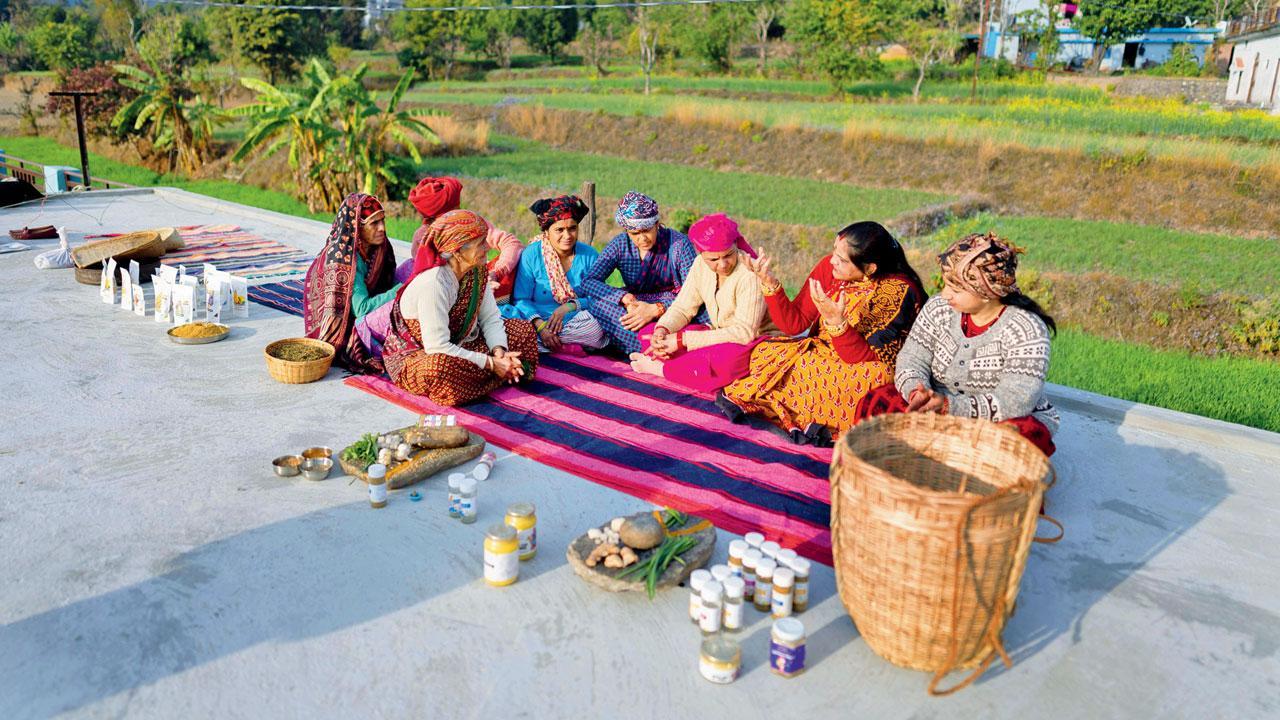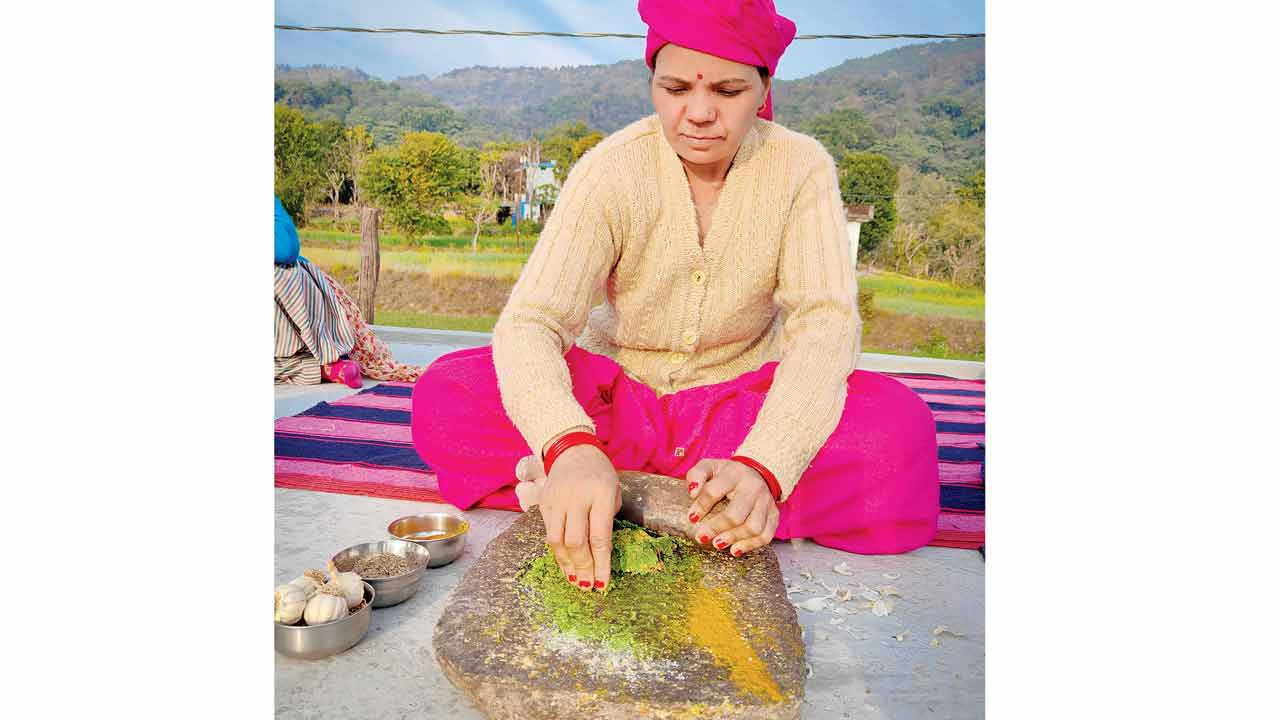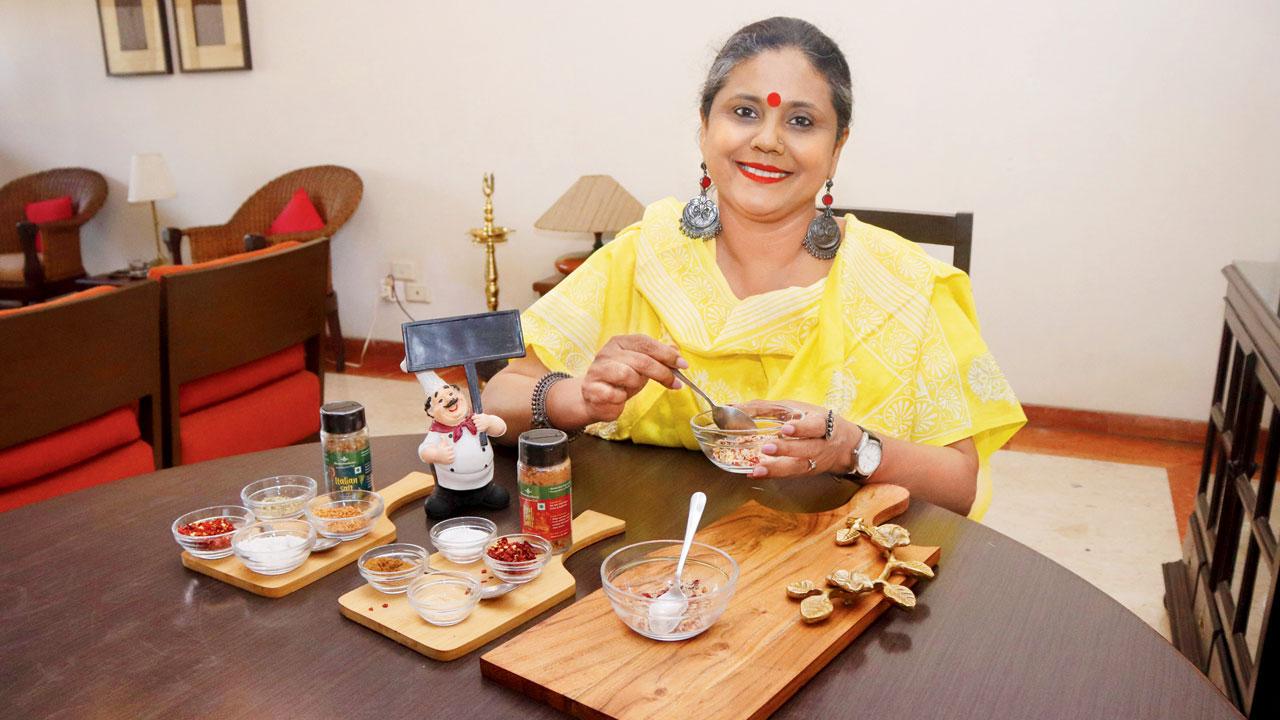Flavoured salts, a Uttarakhand speciality, are now in kitchens in flavours new and old

Namakwali, an Uttarakhand-based seasoning brand started by social worker Shashi Bahuguna Raturi, employs local women to grind salts and prepare seasonings, based on age-old recipes passed down in their families
In a small village in the Pauri Garhwal district of Uttarakhand, a mountainous region with verdant fields and sunshine, Shashi Bahuguna Raturi and her group of 20 women chefs grind together rock salt, herbs, and spices on a traditional silbatta (grinding-stone). They’re making pisyu loon, a flavoured salt native to Uttarakhand cuisine. “In our homes, chutneys and salts are always ground on silbattas, passed down from the grandmother to the mother and the daughter. We know no other way,” says Raturi.
ADVERTISEMENT
Raturi, who has been a social worker since 1982, started Namakwali in 2018 to give the women of the region gainful employment and to take the pahadi salt from Uttarkashi, Tehri Garhwal, Pithoragarh, and Dehradun to the world, and to make the humble silbatta famous.

Pisyu loon is a staple Uttarakhand dish and is sometimes eaten with rotis instead of a bhaji. The most common version, hara namak, is made by grinding green chillies, garlic cloves, coriander, hing, and mint, adding rock salt, and then roasting the mixture to remove the moistness. There’s also the garlic and ginger-flavoured salt, made in much the same way. “We eat it with everything—dahi, raita, boiled potatoes, ragi rotis, and pahadi kheera (a type of cucumber found in the hills)—it’s delicious,” she reminisces. Namakwali, which refers to the quality of a woman being assertive and salty, also sells homemade chutney powders, ghee, spices and masalas made from herbs in the region. While it’s sometimes a derogatory term, the “namakwalis” wear it as a badge of honour.

Varsha Rajan Berry’s family always had a bottle of red chilli salt at their table, which inspired her to craft and sell flavoured salts for her brand, Homemakerz, which she runs with her sister-in-law Anuradha Chandra. Pic/ANURAG AHIRE
Closer to home, Oshiwara-based Varsha Rajan Berry and her sister-in-law Anuradha Chandra, who is based in Malad, have experimented with flavoured salts for their homegrown gourmet brand, Homemakerz. Growing up in Lucknow, Berry’s breakfast table always had a bottle of red chilli salt made of roasted and powdered cumin, hing, and red chilli flakes. The social sector professional says it was a recipe created by her grandmother and passed down to her family, a spice blend they would add to every recipe: “If salt was less, or a dish didn’t taste flavourful, we’d add chilli salt instead.” Her grandmother and mother also used a curry salt made of amchur and garam masala as an all-in-one tadka mix for dals, curries, and gravies.
It was this chilli salt and curry salt that years later she would process and sell under Homemakerz, which she set up with Chandra, a corporate trainer, in the city in 2018. The preservative-free brand has four flavours to choose from—Italian salt, grill salt, heritage red chill, curry salt, and a range of ready-to-eat millet noodles and sauces.

Goa-based home chef Archana Potdar has experimented with four types of flavoured salt seasoning: cumin salt, garlic salt, cayenne salt, and even pepper and salt. PIC/ARCHANA POTDAR
The salts last nine months after opening and can be used as an all-in-one spice mix for dishes. Here, women from lower-income households are also employed to grind the salts, mix the spices, and prepare the final product. “It’s not just a salt—a flavour,” says Berry. “My children live abroad, and they depend on it, as do our customers.”
The Italian salt, for which the base is sea salt, combines all the main spices used for pasta—roasted, dehydrated garlic, rosemary, thyme, and oregano. The grill salt—which customers call Kapil Dev, given its versatility—is made of dehydrated and powdered lime leaves, thyme, and garlic, and can be used as a flavouring for grilled or sautéed veggies, chicken, and paneer.
“If you want to cook a good curry, but you’re in a hurry, you can skip the masala process and add the curry salt,” she says, adding, “Or, if you’re craving pasta, just sauté veggies and sprinkle the Italian salt over them for a quick and easy meal. It is healthy, tasty, and convenient!”
Using flavoured salts requires one to balance the tastes and flavour profiles of the foods it is added to. Archana Potdar runs the recipe blog The Mad Scientist’s Kitchen, named after her inclination to fashion measurements and mixtures out of intuition rather than a recipe.

Archana Potdar
She loves using chilli salt to lend an extra layer of oomph to specific dishes. The Goa-based food blogger has been making flavoured salts for a while now; it began as a recipe challenge for her blog last year. “I make cumin-flavoured salt, garlic salt, cayenne salt, and pepper salt,” she tells us.
Potdar says the idea for flavoured salts came to her as a different spice mix for her dishes. “I make cumin salt by roasting cumin seeds, letting them cool, and then grinding them with salt with a mortar and pestle,” she says. It’s best to make small quantities because moisture makes the salt lumpy after a while. She adds that it can be sprinkled on sweet potatoes, chaat, cucumbers, radishes, and fruit salad, too—it works incredibly well topped on pineapple and mangoes. “It brings out a pop of flavours,” she says.

Shashi Bahuguna Raturi
Her husband, Girish, is a massive fan of garlic salt: “He uses it on everything—from dal to salad to boiled eggs to French fries,” she laughs. Mixed with grated cheese, it can add a flavourful kick to a sandwich. Her daughter, on the other hand, likes her cayenne salt mix. “They love it,” she adds.
 Subscribe today by clicking the link and stay updated with the latest news!" Click here!
Subscribe today by clicking the link and stay updated with the latest news!" Click here!







